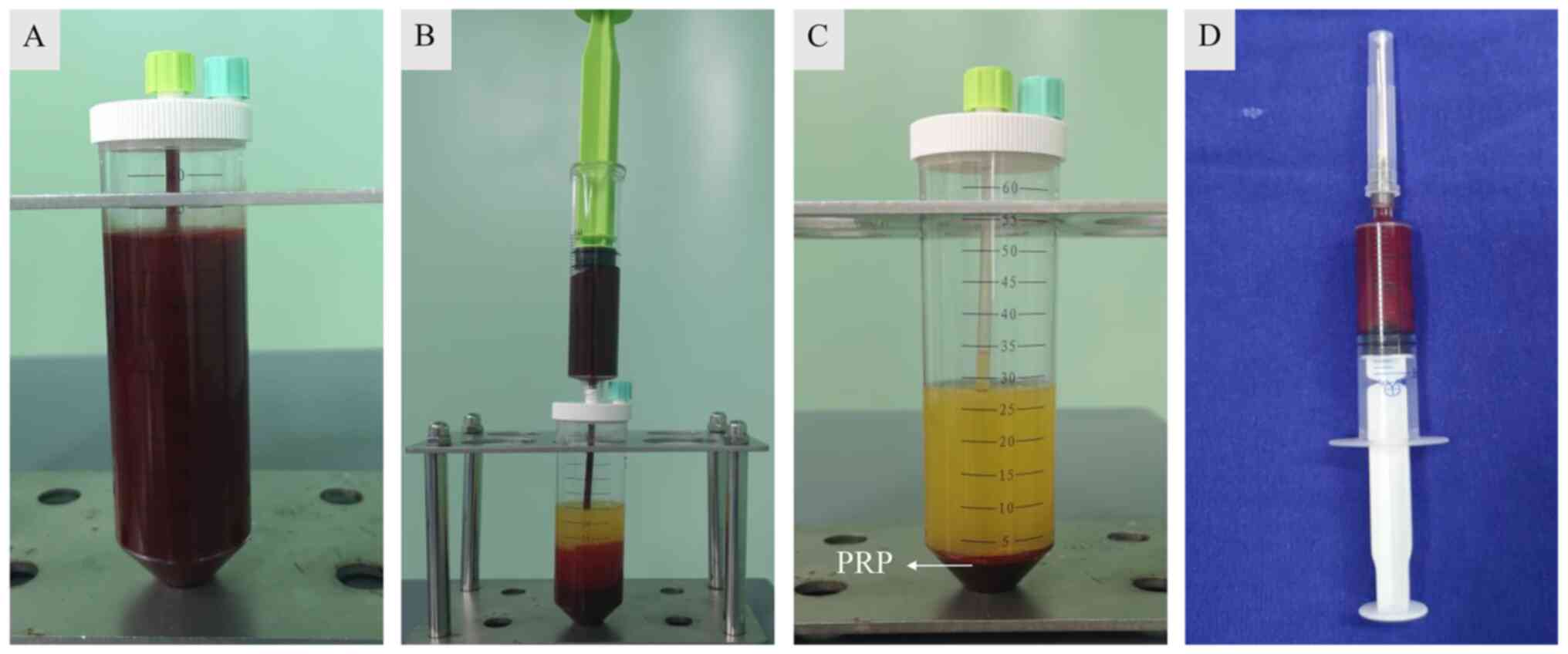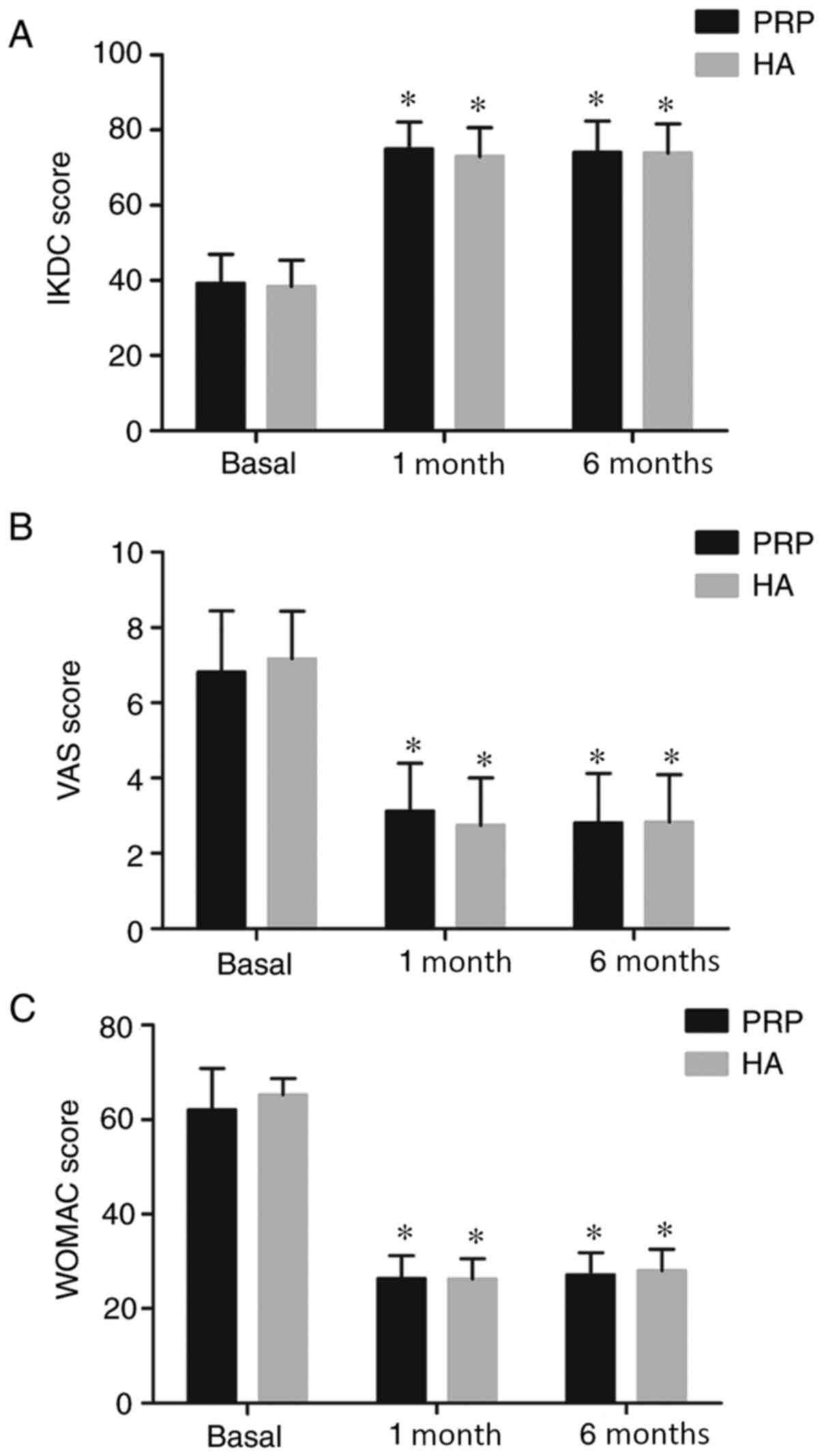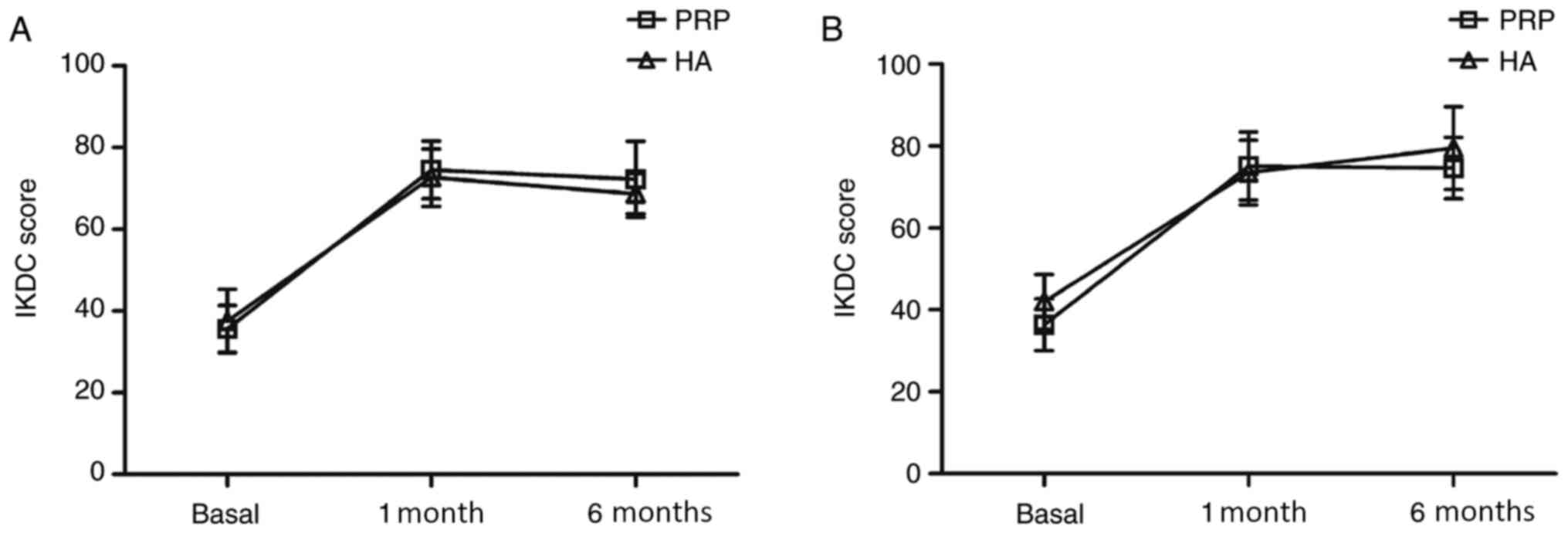|
1
|
Robinson DL, Kersh ME, Walsh NC, Ackland
DC, de Steiger RN and Pandy MG: Mechanical properties of normal and
osteoarthritic human articular cartilage. J Mech Behav Biomed
Mater. 61:96–109. 2016.PubMed/NCBI View Article : Google Scholar
|
|
2
|
Zhang W, Moskowitz RW, Nuki G, Abramson S,
Altman RD, Arden N, Bierma-Zeinstra S, Brandt KD, Croft P, Doherty
M, et al: OARSI recommendations for the management of hip and knee
osteoarthritis, Part II: OARSI evidence-based, expert consensus
guidelines. Osteoarthritis Cartilage. 16:137–162. 2008.PubMed/NCBI View Article : Google Scholar
|
|
3
|
Brzusek D and Petron D: Treating knee
osteoarthritis with intra-articular hyaluronans. Curr Med Res Opin.
24:3307–3322. 2008.PubMed/NCBI View Article : Google Scholar
|
|
4
|
Maricar N, Callaghan MJ, Felson DT and
O'Neill TW: Predictors of response to intra-articular steroid
injections in knee osteoarthritis - A systematic review.
Rheumatology (Oxford). 52:1022–1032. 2013.PubMed/NCBI View Article : Google Scholar
|
|
5
|
Shah NJ, Geiger BC, Quadir MA, Hyder MN,
Krishnan Y, Grodzinsky AJ and Hammond PT: Synthetic nanoscale
electrostatic particles as growth factor carriers for cartilage
repair. Bioeng Transl Med. 1:347–356. 2016.PubMed/NCBI View Article : Google Scholar
|
|
6
|
Medeiros Da Cunha CM, Perugini V,
Bernegger P, Centola M, Barbero A, Guildford AL, Santin M, Banfi A,
Martin I and Marsano A: Vascular endothelial growth factor
sequestration enhances in vivo cartilage formation. Int J Mol Sci.
18(2478)2017.PubMed/NCBI View Article : Google Scholar
|
|
7
|
Li M, Zhang J, Jin Q, Li J, He Z and Di Z:
Role of platelet-rich plasma in articular cartilage lesions. Chin
Med J (Engl). 127:3987–3992. 2014.PubMed/NCBI View Article : Google Scholar
|
|
8
|
Mascarenhas R, Saltzman BM, Fortier LA and
Cole BJ: Role of platelet-rich plasma in articular cartilage injury
and disease. J Knee Surg. 28:3–10. 2015.PubMed/NCBI View Article : Google Scholar
|
|
9
|
Masuki H, Okudera T, Watanebe T, Suzuki M,
Nishiyama K, Okudera H, Nakata K, Uematsu K, Su CY and Kawase T:
Growth factor and pro-inflammatory cytokine contents in
platelet-rich plasma (PRP), plasma rich in growth factors (PRGF),
advanced platelet-rich fibrin (A-PRF), and concentrated growth
factors (CGF). Int J Implant Dent. 2(19)2016.PubMed/NCBI View Article : Google Scholar
|
|
10
|
Mussano F, Genova T, Munaron L, Petrillo
S, Erovigni F and Carossa S: Cytokine, chemokine, and growth factor
profile of platelet-rich plasma. Platelets. 27:467–471.
2016.PubMed/NCBI View Article : Google Scholar
|
|
11
|
Frisbie DD, Kawcak CE, Werpy NM, Park RD
and McIlwraith CW: Clinical, biochemical, and histologic effects of
intra-articular administration of autologous conditioned serum in
horses with experimentally induced osteoarthritis. Am J Vet Res.
68:290–296. 2007.PubMed/NCBI View Article : Google Scholar
|
|
12
|
Alessio-Mazzola M, Repetto I, Biti B,
Trentini R, Formica M and Felli L: Autologous US-guided PRP
injection versus US-guided focal extracorporeal shock wave therapy
for chronic lateral epicondylitis: A minimum of 2-year follow-up
retrospective comparative study. J Orthop Surg (Hong Kong).
26(2309499017749986)2018.PubMed/NCBI View Article : Google Scholar
|
|
13
|
Karaduman M, Okkaoglu MC, Sesen H,
Taskesen A, Ozdemir M and Altay M: Platelet-rich plasma versus open
surgical release in chronic tennis elbow: A retrospective
comparative study. J Orthop. 13:10–14. 2016.PubMed/NCBI View Article : Google Scholar
|
|
14
|
Rainys D, Samulėnas G, Kievišas M,
Samulėnienė E, Pilipaitytė L and Rimdeika R: Platelet biology and
the rationale of PRP therapy in chronic wounds. Eur J Plast Surg.
40:1–10. 2017.
|
|
15
|
Lisi C, Perotti C, Scudeller L, Sammarchi
L, Dametti F, Musella V and Di Natali G: Treatment of knee
osteoarthritis: Platelet-derived growth factors vs. hyaluronic
acid. A randomized controlled trial. Clin Rehabil. 32:330–339.
2018.PubMed/NCBI View Article : Google Scholar
|
|
16
|
Sánchez M, Anitua E, Azofra J, Aguirre JJ
and Andia I: Intra-articular injection of an autologous preparation
rich in growth factors for the treatment of knee OA: A
retrospective cohort study. Clin Exp Rheumatol. 26:910–913.
2008.PubMed/NCBI
|
|
17
|
Wang-Saegusa A, Cugat R, Ares O, Seijas R,
Cuscó X and Garcia-Balletbó M: Infiltration of plasma rich in
growth factors for osteoarthritis of the knee short-term effects on
function and quality of life. Arch Orthop Trauma Surg. 131:311–317.
2011.PubMed/NCBI View Article : Google Scholar
|
|
18
|
Kon E, Mandelbaum B, Buda R, Filardo G,
Delcogliano M, Timoncini A, Fornasari PM, Giannini S and Marcacci
M: Platelet-rich plasma intra-articular injection versus hyaluronic
acid viscosupplementation as treatments for cartilage pathology:
From early degeneration to osteoarthritis. Arthroscopy.
27:1490–1501. 2011.PubMed/NCBI View Article : Google Scholar
|
|
19
|
Kellgren JH and Lawrence JS: Radiological
assessment of osteoarthrosis. Ann Rheum Dis. 16:494–502.
1957.PubMed/NCBI View Article : Google Scholar
|
|
20
|
Agel J and LaPrade RF: Assessment of
differences between the modified Cincinnati and International Knee
Documentation Committee patient outcome scores: A prospective
study. Am J Sports Med. 37:2151–2157. 2009.PubMed/NCBI View Article : Google Scholar
|
|
21
|
Bellamy N: WOMAC: A 20-year experiential
review of a patient-centered self-reported health status
questionnaire. J Rheumatol. 29:2473–2476. 2002.PubMed/NCBI
|
|
22
|
Dones I, Messina G, Nazzi V and Franzini
A: A modified visual analogue scale for the assessment of chronic
pain. Neurol Sci. 32:731–733. 2011.PubMed/NCBI View Article : Google Scholar
|
|
23
|
Bielecki TM, Gazdzik TS, Arendt J,
Szczepanski T, Król W and Wielkoszynski T: Antibacterial effect of
autologous platelet gel enriched with growth factors and other
active substances: An in vitro study. J Bone Joint Surg Br.
89:417–420. 2007.PubMed/NCBI View Article : Google Scholar
|
|
24
|
Wu W, Chen F, Liu Y, Ma Q and Mao T:
Autologous injectable tissue-engineered cartilage by using
platelet-rich plasma: Experimental study in a rabbit model. J Oral
Maxillofac Surg. 65:1951–1957. 2007.PubMed/NCBI View Article : Google Scholar
|
|
25
|
Sun Y, Feng Y, Zhang CQ, Chen SB and Cheng
XG: The regenerative effect of platelet-rich plasma on healing in
large osteochondral defects. Int Orthop. 34:589–597.
2010.PubMed/NCBI View Article : Google Scholar
|
|
26
|
Li M and Zhang CQ: Clinical application
and biomaterial properties of platelet-rich plasma. J Clin Rehabil
Tissue Eng Res. 8:1445–1448. 2011.(In Chinese).
|
|
27
|
Filardo G, Di Matteo B, Di Martino A,
Merli ML, Cenacchi A, Fornasari P, Marcacci M and Kon E:
Platelet-rich plasma intra-articular knee injections show no
superiority versus viscosupplementation: A randomized controlled
trial. Am J Sports Med. 43:1575–1582. 2015.PubMed/NCBI View Article : Google Scholar
|
|
28
|
Filardo G, Kon E, Di Martino A, Di Matteo
B, Merli ML, Cenacchi A, Fornasari PM and Marcacci M: Platelet-rich
plasma vs hyaluronic acid to treat knee degenerative pathology:
Study design and preliminary results of a randomized controlled
trial. BMC Musculoskelet Disord. 13(229)2012.PubMed/NCBI View Article : Google Scholar
|
|
29
|
Hosnuter M, Aslan C, Isik D, Caliskan G,
Arslan B and Durgun M: Functional assessment of autologous
platelet-rich plasma (PRP) after long-term storage at -20 ˚C
without any preservation agent. J Plast Surg Hand Surg. 51:235–239.
2017.PubMed/NCBI View Article : Google Scholar
|

















